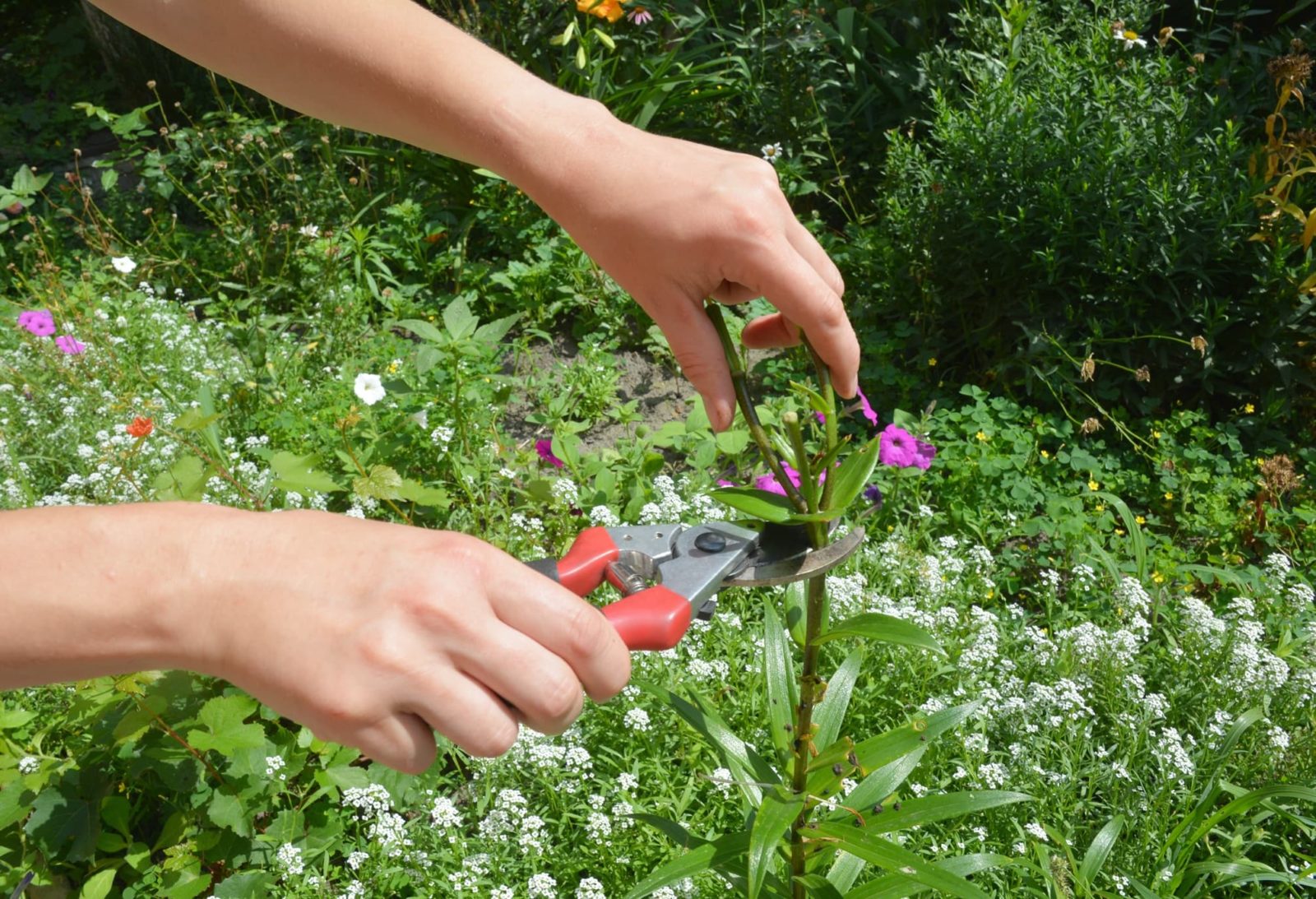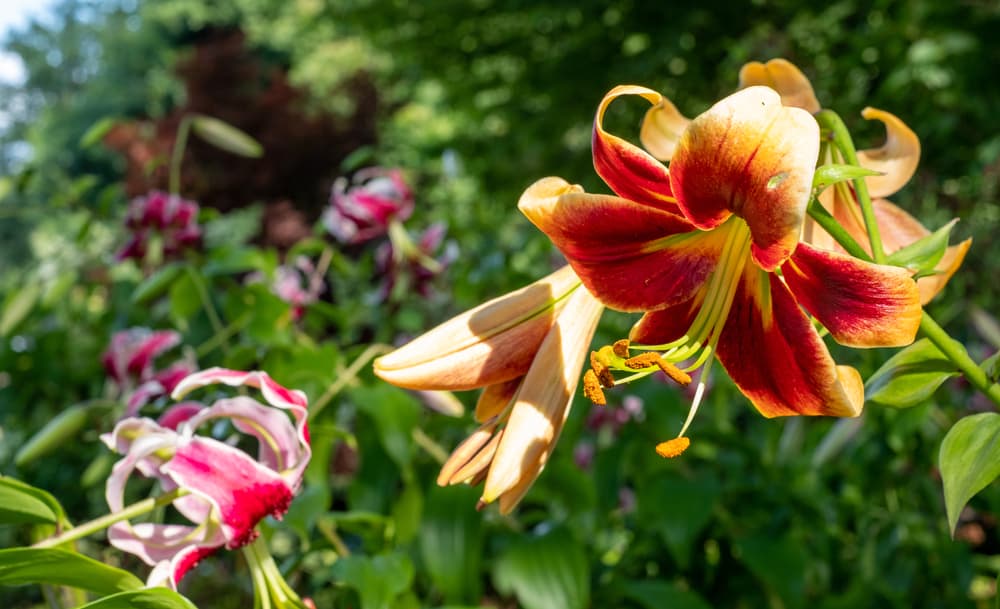What Do You Do With Lilies Once They’ve Flowered? Lynn Slackman Reveals All

BULBS > LILY > DEADHEADING

Elizabeth is a Permaculture Garden Designer, Sustainability Consultant and Professional Writer, working as an advocate for positive change. She graduated from the University of St. Andrews with an MA in English and Philosophy and obtained a Diploma in Applied Permaculture Design from the Permaculture Association.
Reviewed By COLIN SKELLY

Colin is a Horticulturist and Horticultural Consultant with experience in a range of practical and managerial roles across heritage, commercial and public horticulture. He holds the Royal Horticultural Society’s Master of Horticulture award and has a particular interest in horticultural ecology and naturalistic planting for habitat and climate resilience.
Contributions From LYNN SLACKMAN

Lynn is the current President of the North American Lily Society. She has been growing lilies for years and is a keen gardener. The society has over 2,500 followers on Facebook and is a great place for those in the US to meet and discuss any relevant lily care.
IN THIS GUIDE
LILY GUIDES
Asiatic
Deadheading
Giant Himalayan
Varieties
There are thousands of types of lily, all bringing an individual charm to the attractive central theme.
Depending on your skills and ambition as a gardener you can go for the easy-to-grow varieties you’ll find on the seed racks at your local garden centre, or you can give yourself a challenge and attempt to grow something a little more finickity.
Whatever you go for, though, get it right and you’ll be rewarded with a colourful and sometimes fragrant bloom.

When it comes to lilies, one of the most common questions we hear from fellow gardeners is “what do you do with lilies once they’ve flowered?”
It’s a good question – because while lilies won’t flower again once they’ve bloomed, there are a couple of convincing reasons to remove the flowers.
Or, as it’s also known, to deadhead them.
Why Deadhead Lilies?
“Deadheading lilies will certainly enable the plant to direct its energy to the stem and bulbs instead of the flower,” says Lynn Slackman, from the North American Lily Society.
“However, if you are a hybridiser, pollination of the flower is essential to furthering your hybridising goals.”
Before we jump into showing you what to do with your lilies once they’ve finished flowering, we’ll quickly introduce deadheading, in case you’re not familiar.

Put simply, deadheading is the process of removing flowers from ornamental flowering plants.
Using scissors, secateurs or similar to snip each spent flower from the plant has several benefits:
- Some plants will grow new flowers in their place (not lilies, however!)
- If pollinated, seed production takes a lot of energy. Deadheading helps the plant to direct this energy elsewhere instead. With lilies, where you can reuse the bulb for next year’s growth, directing the plant’s energy into storing nutrients in the bulb is very useful.
- Some plants – like bushy roses, for example – leave a lot of mess as they die off. Deadheading quite literally nips this in the bud and saves you the hassle of cleaning up.

What To Do When Your Lilies Are Done Flowering
This all takes us back to the title, and to the question of what you should do with your lily plants once they’ve finished flowering and the bloom is starting to die off.
The short answer: remove each flower as it becomes spent.
“I don’t spend a lot of time deadheading in the garden but I will deadhead Lilies as they go over,” says Master Horticulturist Colin Skelly.
“The flowers are so large and I grow them in pots for prominent positions, so they’d really detract from the desired effect if I didn’t.”
You’ll be able to tell when it’s time because the flower will discolour and wilt.

(This is another benefit of deadheading: the vibrancy of your garden is maintained through the removal of dull, fading blooms.)

- To deadhead either pinch hard the stem beneath each flower and pull it off with your fingers, or cut with a sharp gardening tool like the ones we mentioned previously.
- Secateurs are usually best.
- Then simply discard the flower, either into your compost, your garden waste bin or, if you’re feeling naughty, into the general waste.
- When deadheading, take care not to remove any leaves along with the flower, as the plant needs all of its leaves to collect sunlight and generate energy!

The effectiveness of deadheading as a way to redirect energy to the bulb is reduced if you chop the leaves off.

How To Get The Best Bloom From Your Lilies
If you’ve found your way to this article, perhaps you’re keen to improve the overall quality and duration of your lily bloom.
There are plenty of ways to do this, and whether you’re reading at the start or the end of their time of interest, these tips will help you to enjoy a more vibrant growing season.
Firstly, we recommend planting your lily bulbs out in autumn. While you can plant them out through March, you’ll see better results with earlier burial.
Exact conditions depend on the variety you’re growing, but as a rule, lilies enjoy full sun or partial shade.

Soil should be rich and nutritious: John Innes ericaceous fertiliser with a little controlled-release chaser will do best, as these are hungry plants!
You can also feed lilies while they’re growing. Fortnightly feeds are recommended.
Your lily bloom will be stronger if the plant isn’t allowed to dry out, especially in hot conditions.
Be vigilant with watering, taking care to strike the balance between not over-or under-watering.

Some lily varieties are of interest to aphids and other pests: keep an eye out here as well and take steps to remove any visitations as quickly as possible.
Squish any lily beetles you see (or remove and relocate far away, if you’re feeling pacifist).
These visitors will spare no quarter causing damage, sometimes irreparable, to your lilies.
Take Good Care Of Those Lilies!

Hopefully, you now have a better understanding of what to do with your lilies when they’ve finished flowering.
The takeaway: deadhead them, taking care not to remove any leaves along with the flower.
Do this and your plant will direct its resources toward storing energy in the bulb rather than creating new seeds, leading to a stronger and healthier bloom next year.
As you get more familiar with lilies you’ll begin to get used to their rhythms and habits and, over time, you’ll achieve consistently beautiful blooms.
The range of colours, shapes, and smells make this type of flower deeply rewarding to any gardener willing to invest the time and energy to get familiar.
So go, grow, and enjoy!
